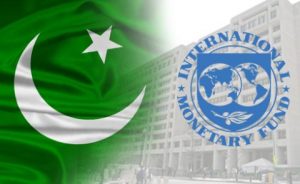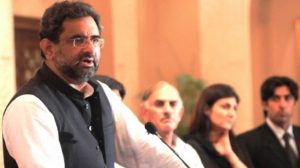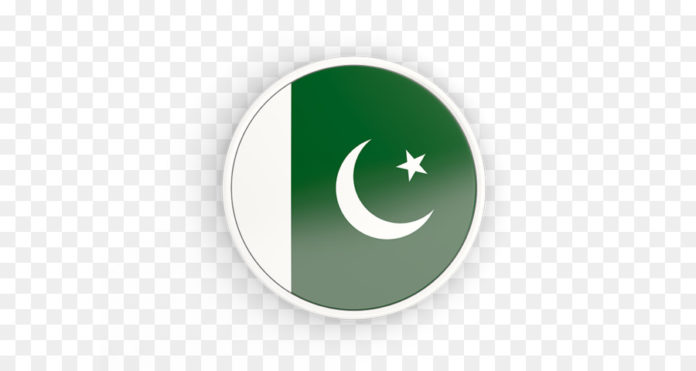LAHORE: Pakistan is on the verge of its 13th bailout programme from the International Monetary Fund (IMF) as Finance minister Asad Umar and his flock of experts are in the process of chalking out details of the programme with the international money lending organisation scheduled to visit Islamabad on November 7.

The IMF was founded over 50 years ago to allow currency to be exchanged freely and easily between member countries. Today, the international lending body works to help member countries ensure that they always have enough foreign exchange to continue to do business with the rest of the world.
When a country does not have the required dollars to pay back what it owes to the world, it needs to borrow more in order to maintain the sustainability of its economy. This is what a current account deficit essentially means.
The current account of a country represents its performance in external trade. Pakistan has been running a current account deficit for over a decade, and it has become unbearably hard for the country to function like it has been doing so without managing its current account. To fulfil its debt obligations, the country needs to borrow money from an international lender.
Pakistan is stuck in a repeated cycle of borrowing to pay back money it already owes to other countries. The scary part – it seems like it has become too comfortable with it.
Why does this keep happening?
Pakistan’s import bill keeps increasing and the exports are meagre in comparison. Its current account deficit was recorded at $5,798 million in the second quarter of 2018. The current account in the country averaged at a surplus of $638.55 million from 1976 until 2018, reaching an all-time high of $1,418 in the third quarter of the year 2002. Its balance of trade recorded a deficit of Rs335,341 million in the second quarter of 2018 with exports worth Rs214,367 million being completely overshadowed by the massive Rs549,708 million worth of imports.
 According to a Bloomberg report, “Pakistan may need more than $12 billion, which would be higher than the biggest IMF package extended to Pakistan until now, a $7.6 billion loan in 2008”.
According to a Bloomberg report, “Pakistan may need more than $12 billion, which would be higher than the biggest IMF package extended to Pakistan until now, a $7.6 billion loan in 2008”.
The IMF usually provides three-year loan programs under its Extended Fund Facility to help countries facing balance-of-payments crises. The loans are often tied to economic targets the government has to meet, for example curbing fiscal or current-account deficits, reducing inflation or allowing more flexibility in monetary policy.
Successive governments have avoided structural reforms, including a taxation overhaul, privatisation of state entities, and reductions in state spending.
An economic expert, in a comment to Profit, said, “In my opinion, an unstable political climate, corruption, and lack of policy implementation have been the major reasons why Pakistan has had to keep borrowing money from organisations such as the IMF. If the leadership of the country had decided decades ago, that the future of the country is more important than their corrupt political agendas, we probably would not have been in this situation right now. It’s not that we don’t have economic experts, or the right brains in the government, the root of the problem has been the intent of previous political leadership”.
The IMF, in its country economic outlook report for the Middle East, North Africa, and Pakistan regions stated that increased debt levels will limit the extent to which fiscal policy can boost short-term demand. As governments work to bring down their debt to manageable levels, they should look to broaden tax bases and improve the efficiency of spending…”.
 In the dying moments of its tenure, the Pakistan Muslim League Nawaz (PML-N) government under the leadership of Shahid Khaqan Abbasi presented its budget months before the general elections – one of the most noticeable aspects of which was the intention of the government to broaden the tax base and bring more people, or classes of people, into the tax net.
In the dying moments of its tenure, the Pakistan Muslim League Nawaz (PML-N) government under the leadership of Shahid Khaqan Abbasi presented its budget months before the general elections – one of the most noticeable aspects of which was the intention of the government to broaden the tax base and bring more people, or classes of people, into the tax net.
For all intents and purposes, Pakistan does not have a tax base. Only about 1 per cent of the population pays income tax. According to an IMF 2016 working paper, Pakistan had a “tax revenue gap” equivalent to 10 per cent of the national GDP ($28 billion in 2016).
The IMF, will not solve Pakistan’s problems. Pakistan’s external debt soared to $95097 million in the second quarter of 2018 from $91761 million in the first quarter of 2018. Prime Minister Imran Khan inherited several problems when to took charge of the office including soaring foreign debt, and foreign reserves expected to last only a few months.
It remains to be seen what conditions the IMF will put out for Pakistan to follow. Whether its the privatisation of state-owned entities such as Pakistan International Airlines (PIA) and Pakistan Steel Mills (PSM), broadening the tax base, curbing unnecessary state spending, or tightening the monetary policy – the country’s future however, depends on striving to meet those conditions, and work its way out of the borrowing comfort zone.
At the end of the day, what is clear to many is that it’s either politics, or the economy. A government which chooses the former might serve another term, but a government that chooses the latter, will be remembered in history as heroes who saved the country.





Hello. NAWAB SHAH KAKAR QUETTA PK . CAR.s
USD 9 billion to be payed as loan interest or installments till at the end of the year means we have spoiled too much loans in the past
Look at India and copy paste asap
Kindly add link to the sources whenever you quote/state a fact.